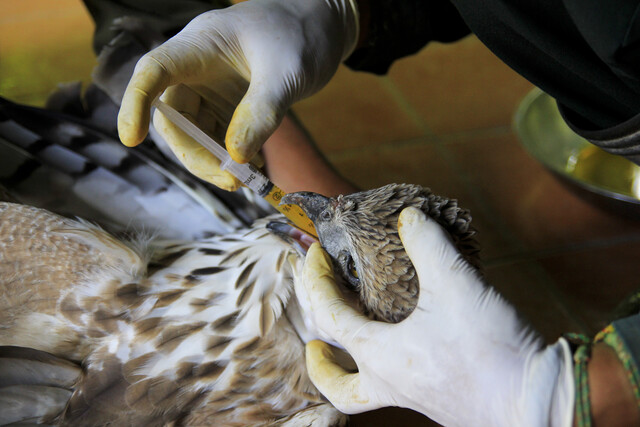Online Class: Spiders and Other Insects in North America

no certificate
with CEU Certificate*
-
12Lessons
-
20Exams &
Assignments -
143Students
have taken this course -
5Hours
average time -
0.5CEUs
Course Description
Dive into the mesmerizing and mysterious realm of insects and spiders with our captivating course, "Spiders and Other Insects of North America." Imagine yourself as an intrepid explorer, a curious adventurer, navigating through the densely populated but often overlooked world right beneath your feet. This course is a journey, a transformation, a new lens through which you will see the world. Whether you've always had an affinity for these remarkable creatures or you've approached them with a mix of awe and anxiety, this course promises to redefine your understanding and appreciation of the tiny architects of our ecosystems.
Every corner of North America presents a stage where the drama of life unfolds -- spiders spinning intricate webs, beetles marching industriously, and butterflies painting the sky with their magnificent wings. This course allows you to be a part of this vibrant living tapestry. Consider it a unique expedition into your own backyard, where each participant not only gains knowledge but also collects stories that enchant and educate.
Are you someone who craves knowledge about the natural world? Do you wish to break down the walls of misconception that may have held you back from appreciating these creatures? This course warmly welcomes you, making the unfamiliar become not just familiar, but fascinating. By the end of our journey together, you'll be equipped to lead engaging conversations about the ecosystems these creatures dwell in--whether you're talking to an audience of peers, presenting at a local community meeting, or simply chatting with friends and family.
Your initial hesitation might stem from a common discomfort around insects and arachnids, but we are here to provide a gentle yet enthusiastic nudge towards understanding. Through a seamless blend of immersive storytelling and meticulous science, we will explore the indispensable roles these creatures play, transforming fear into fascination and trepidation into triumph.
Imagine walking through a sunlit park, now equipped with an understanding of the crucial jobs performed by the insects buzzing around you. Picture confidently identifying the spider building a temporary home adjacent to your windowsill, drawing upon the rich knowledge you've accrued to explain its significance to an intrigued onlooker. This course will empower you with these skills.
Our approach is holistic, encompassing not just the scientific aspects but the intricate stories that each creature tells. We unravel age-old myths and dispel fears rooted in misunderstanding. With a focus on the different ecosystems, from the verdant Pacific Northwest to the arid landscapes of the Southwest, you'll engage with a well-rounded perspective of how diverse habitats nurture diverse life forms.
Moreover, you'll learn about the art of coexistence -- an essential skill in an increasingly environmentally conscious world. We delve into the safety protocols for living harmoniously with the more intimidating members of the insect and spider community, providing knowledge that meets curiosity with caution and turns apprehension into attentiveness.
Consider this course your personal guide to the unseen, bringing the intricate dance of ecology right to your doorstep. As you journey through each module, you'll feel a growing connection with these often-misunderstood creatures, equipped with insights that will pique your curiosity further, perhaps inspiring you to pursue deeper involvement with wildlife or conservation efforts.
The commitment is yours, and the journey promises to be magnificent. With each lesson, you'll venture further into understanding the captivating world of insects and spiders, emerging with a newfound perspective of respect and admiration. When you choose to enroll in "Spiders and Other Insects of North America," you're not just taking a course; you're choosing to see the world in a way few ever have and becoming part of a growing community of informed, passionate naturalists. So take the leap--the natural wonders of North America await your discovery, and their secrets are yours to unveil.
- Completely Online
- Self-Paced
- 6 Months to Complete
- 24/7 Availability
- Start Anytime
- PC & Mac Compatible
- Android & iOS Friendly
- Accredited CEUs

Course Lessons
Lesson 1. Creepy Crawlies: Heroes of Our Ecosystem
 Review Practice Worksheet: Lesson-1-Downloadable-27055.pdf
Review Practice Worksheet: Lesson-1-Downloadable-27055.pdf Lesson discussions: Spiders and Insects; Reasons for Taking this Course
Lesson discussions: Spiders and Insects; Reasons for Taking this Course Complete Assignment: An Introduction
Complete Assignment: An Introduction Assessment: Lesson 1 Review Exam
Assessment: Lesson 1 Review Exam
Lesson 2. Mastering Fear: Steps to Overcome Entomophobia
 Review Practice Worksheet: Lesson-2-Downloadable-27056.pdf
Review Practice Worksheet: Lesson-2-Downloadable-27056.pdf Complete: Lesson 2 Activity
Complete: Lesson 2 Activity Assessment: Lesson 2 Review Exam
Assessment: Lesson 2 Review Exam
Lesson 3. Exploring the Intriguing World of Insects and Spiders
 Review Practice Worksheet: Lesson-3-WorkSheet-27057.pdf
Review Practice Worksheet: Lesson-3-WorkSheet-27057.pdf Assessment: Lesson 3 Review Exam
Assessment: Lesson 3 Review Exam
Lesson 4. Fangs: Fact and Fiction
 Review Practice Worksheet: Lesson-4-HomeWork-27058.pdf
Review Practice Worksheet: Lesson-4-HomeWork-27058.pdf Lesson discussions: Spider Bites
Lesson discussions: Spider Bites Assessment: Lesson 4 Review Exam
Assessment: Lesson 4 Review Exam
Lesson 5. Unveiling the Truth: North America's Venomous Spiders
 Review Practice Worksheet: Lesson-5-HomeWork-27059.pdf
Review Practice Worksheet: Lesson-5-HomeWork-27059.pdf Complete: Lesson 5 Activity
Complete: Lesson 5 Activity Assessment: Lesson 5 Review Exam
Assessment: Lesson 5 Review Exam
Lesson 6. Eco-Diversity of the Pacific Northwest: From Landscapes to Arachnids
 Review Practice Worksheet: Lesson-6-StudyGuide-27060.pdf
Review Practice Worksheet: Lesson-6-StudyGuide-27060.pdf Complete: Lesson 6 Activity
Complete: Lesson 6 Activity Assessment: Lesson 6 Review Exam
Assessment: Lesson 6 Review Exam
Lesson 7. Arachnids and Insects of the Southwest: A Deep Dive
 Review Practice Worksheet: Lesson-7-Activity-27061.pdf
Review Practice Worksheet: Lesson-7-Activity-27061.pdf Complete: Lesson 7 Activity
Complete: Lesson 7 Activity Assessment: Lesson 7 Review Exam
Assessment: Lesson 7 Review Exam
Lesson 8. Exploring Arachnid and Insect Diversity on the Great Plains
 Review Practice Worksheet: Lesson-8-StudyGuide-27062.pdf
Review Practice Worksheet: Lesson-8-StudyGuide-27062.pdf Complete: Lesson 8 Activity
Complete: Lesson 8 Activity Assessment: Lesson 8 Review Exam
Assessment: Lesson 8 Review Exam
Lesson 9. The Hidden World of Northeastern Bugs
 Review Practice Worksheet: Lesson-9-HomeWork-27063.pdf
Review Practice Worksheet: Lesson-9-HomeWork-27063.pdf Assessment: Lesson 9 Review Exam
Assessment: Lesson 9 Review Exam
Lesson 10. Understanding the Insects and Spiders of the Southeast
 Review Practice Worksheet: Lesson-10-WorkSheet-27064.pdf
Review Practice Worksheet: Lesson-10-WorkSheet-27064.pdf Complete: Lesson 10 Activity
Complete: Lesson 10 Activity Assessment: Lesson 10 Review Exam
Assessment: Lesson 10 Review Exam
Lesson 11. Facing Your Fears: A Journey to Tranquility
 Review Practice Worksheet: Lesson-11-StudyGuide-27065.pdf
Review Practice Worksheet: Lesson-11-StudyGuide-27065.pdf Lesson discussions: Fear
Lesson discussions: Fear Assessment: Lesson 11 Review Exam
Assessment: Lesson 11 Review Exam
Lesson 12. Understanding Scorpion Stings and Effective Treatments
 Review Practice Worksheet: Lesson-12-StudyGuide-27066.pdf
Review Practice Worksheet: Lesson-12-StudyGuide-27066.pdf Lesson discussions: What is your opinion of this course?; Program Evaluation Follow-up Survey (End of Course); Course Comments; Course Comments
Lesson discussions: What is your opinion of this course?; Program Evaluation Follow-up Survey (End of Course); Course Comments; Course Comments Assessment: The Final Exam
Assessment: The Final Exam Assessment: Lesson 12 Review Exam
Assessment: Lesson 12 Review Exam
Learning Outcomes
- Demonstrate knowledge of safe techniques for managing encounters with insects and spiders to reduce fear and negative outcomes.
- Identify the ecological roles of insects and spiders in maintaining biodiversity and environmental balance within ecosystems.
- Identify strategies such as nature education and therapeutic interventions to manage and potentially overcome entomophobia, enhancing quality of life.
- Recognize the symptoms that differentiate normal anxiety responses from entomophobia to assess when professional help may be needed.
- Describe the safe and responsible use of pesticides to manage insect and spider populations while minimizing environmental impact.
- Identify the roles of insects and spiders in maintaining ecological balance, such as pest control, pollination, and nutrient recycling.
- Identify common symptoms and safety measures associated with bites from spiders, ants, and bedbugs to effectively manage and prevent adverse reactions.
- Recognize the anatomical differences between chelicerae and mandibles in arachnids and insects, respectively, and their functions in these creatures.
- Describe the effects of black widow and brown recluse bites on humans and recognize the appropriate steps for medical treatment.
- Identify the distinguishing characteristics and habitats of the black widow and brown recluse spiders to reduce encounters and enhance safety measures.
- Identify common spider and insect species in the Pacific Northwest and describe their habitats and behaviors, emphasizing their ecological importance and human interaction.
- Recognize the role of spiders and insects in maintaining ecological balance in the Pacific Northwest, such as pest control and nutrient recycling.
- Identify and describe the adaptations that enable spiders and insects to survive in the extreme climates of the American Southwest.
- Demonstrate mastery of lesson content at levels of 70% or higher.
Additional Course Information

- Document Your Lifelong Learning Achievements
- Earn an Official Certificate Documenting Course Hours and CEUs
- Verify Your Certificate with a Unique Serial Number Online
- View and Share Your Certificate Online or Download/Print as PDF
- Display Your Certificate on Your Resume and Promote Your Achievements Using Social Media

Choose Your Subscription Plan
No Certificate / No CEUs
This course only
| Includes certificate | X |
| Includes CEUs | X |
| Self-paced |

|
| Instructor support |

|
| Time to complete | 6 months |
| No. of courses | 1 course |
Certificate & CEUs
This course only
| Includes certificate |

|
| Includes CEUs |

|
| Self-paced |

|
| Instructor support |

|
| Time to complete | 6 months |
| No. of courses | 1 course |
Certificates & CEUs
Includes all 600+ courses
| Includes certificate |

|
| Includes CEUs |

|
| Self-paced |

|
| Instructor support |

|
| Time to complete | 12 Months |
| No. of courses | 600+ |
Certificates & CEUs
Includes all 600+ courses
| Includes certificate |

|
| Includes CEUs |

|
| Self-paced |

|
| Instructor support |

|
| Time to complete | 24 Months |
| No. of courses | 600+ |






